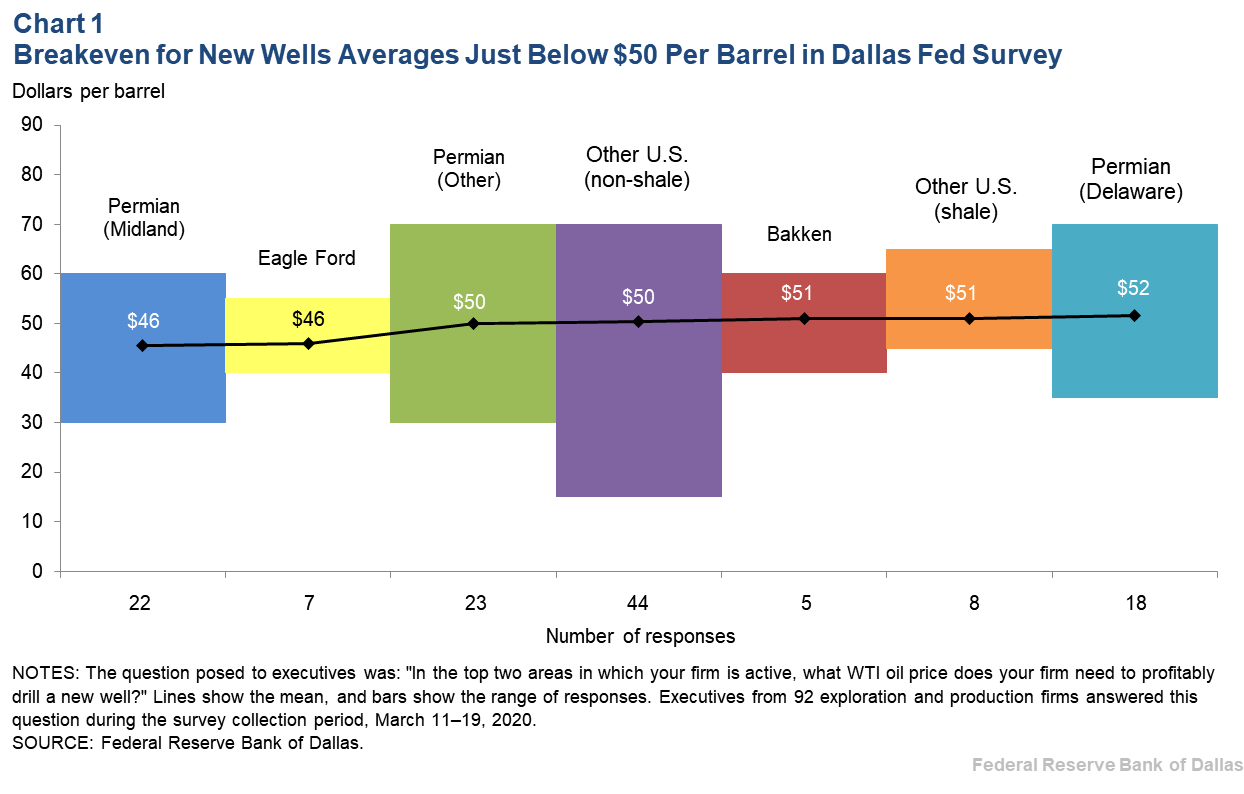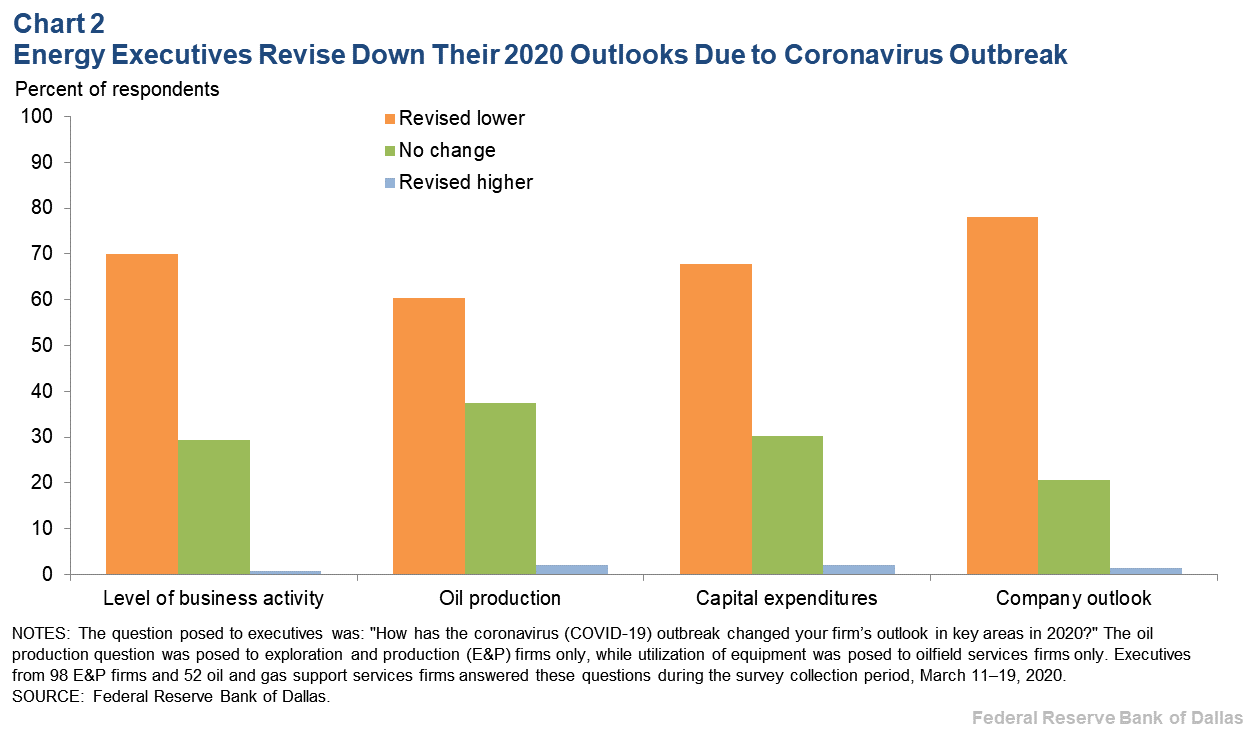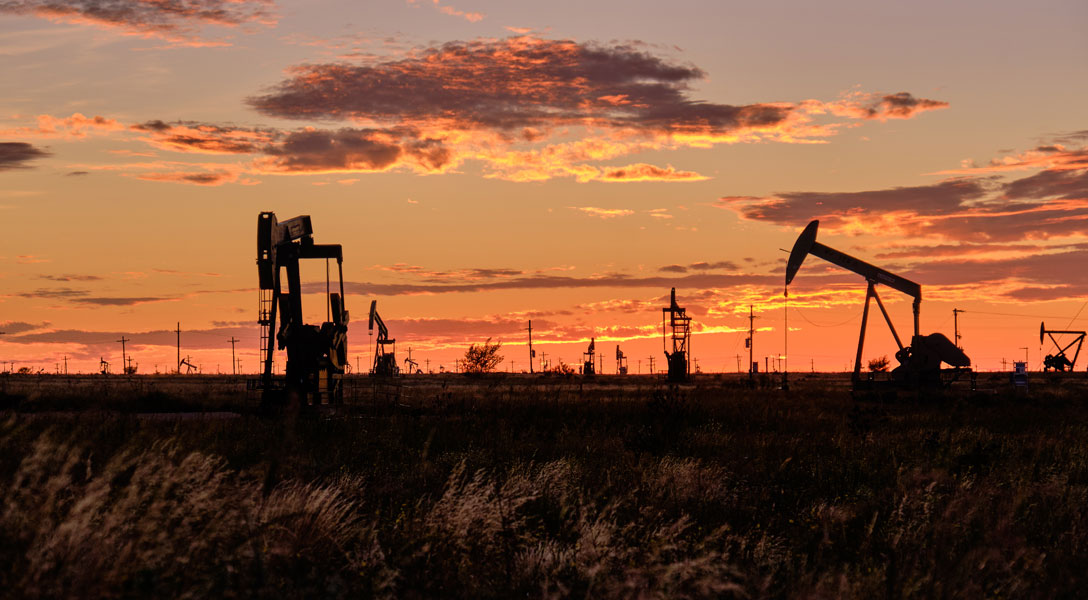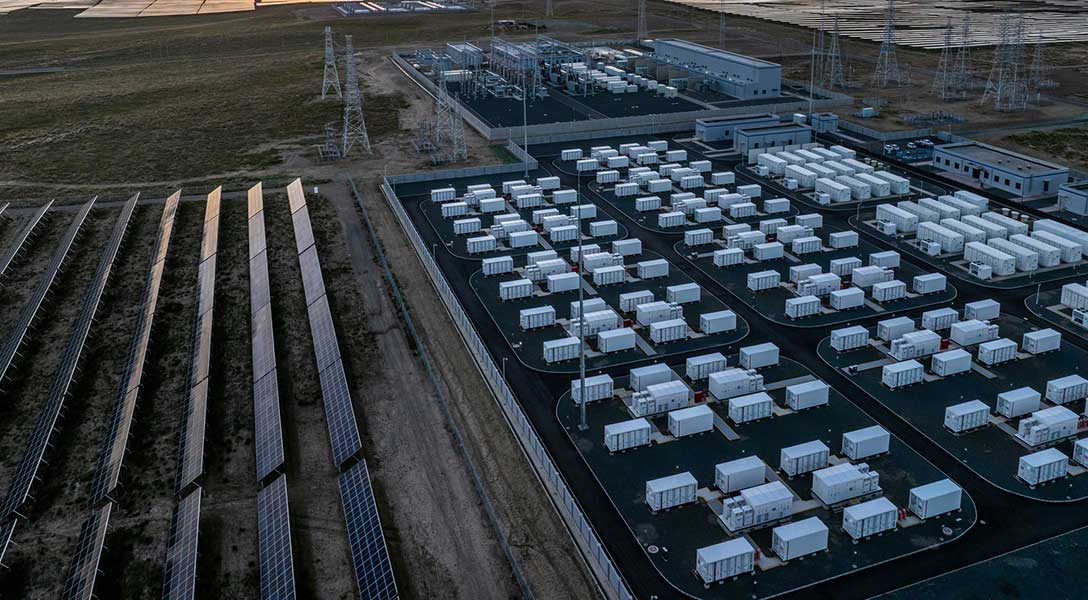
Dallas Fed Energy Survey results point to bleak outlook for oil industry
The price of West Texas Intermediate (WTI) crude oil has plunged more than 50 percent since the start of the year as the coronavirus (COVID-19) pandemic has taken hold and a dispute between energy giants Saudi Arabia and Russia threatens to flood the market with crude oil.
Reflecting these developments, results of the just-released Dallas Fed Energy Survey were the bleakest since the survey’s inception in first quarter 2016 and suggest profound and difficult changes ahead for the sector. More than 200 industry participants in the region were queried from March 11 to March 19.
Coronavirus roils oil market
COVID-19 represents an almost unprecedented challenge to the global economy and oil markets. While it may seem a lifetime ago, the first ripples in the oil market occurred in January when China responded to the outbreak by imposing significant restrictions on economic activity and personal mobility.
China’s importance to the oil market is hard to overstate. It is the second-largest consumer of oil in the world, behind only the U.S, and a good portion of its usage is connected with the transport of goods and people. As a result, China’s sharp reduction in demand was a major, unexpected shock to the system. Since then, the virus has affected numerous other countries, further weakening global oil demand.
Shortly after China’s virus response, in early February, some OPEC members—particularly Saudi Arabia—decided that these events required action. The Saudis raised the possibility of enacting additional production cuts, but Russia’s reluctance led to no agreement. An official OPEC meeting ended March 6, again without action taken. One day later, Saudi Arabia made clear it would not only reverse production cuts already in place but would substantially increase production.
Survey paints bleak picture
With these events as a backdrop, the Dallas Fed Energy Survey in early March asked industry executives how numerous indicators related to their businesses had changed compared with the previous quarter. Respondents could provide direct comments. The survey also included special questions on breakeven prices and the direct impacts of the coronavirus.
Our regular set of questions focuses on how important indicators such as overall business activity, capital expenditures and employment have changed relative to the previous quarter. Responses show the oil industry is already responding to recent developments and suggest a bleak outlook.
- The business activity index—the survey’s broadest measure of conditions facing Eleventh District energy firms—reached an all-time low.
- Almost 60 percent of all firms reported lowering capital expenditures this quarter relative to last. More than 70 percent of exploration and production (E&P) firms have cut expectations for capital spending next year.
- More than 80 percent of executives reported a deteriorating outlook for their firms, while a similar share noted increased uncertainty about the future.
The negative tone was true for both E&P firms, which own and produce the oil, and support services firms.
Survey participants also provided more than 60 comments, many of which mentioned the impacts of the coronavirus and the Russia–Saudi Arabia situation. Most were quite pessimistic, although a few noted that trying times such as these also create opportunities for those properly positioned.
Oil prices below breakevens
The Dallas Fed Energy Survey asks participants in the first quarter of each year about breakeven prices for drilling new wells. In simple terms, a breakeven price refers to the oil price needed to profitably drill a new oil well. The responses are of interest to many who follow the industry since they provide an indication of when oil companies are likely to cut back or increase drilling activity.
Overall, this year’s results aren’t too different from last year’s. The average breakeven price across all respondents was a little under $50. Responses varied widely, though, both within and across areas of exploration (Chart 1).

Current WTI oil prices ($24 per barrel on average during the week ended March 20) are well below nearly all responses. This helps explain the significant reduction in planned capital expenditures that E&P firms reported.
The survey also asked firms what price of oil is needed to cover operating expenses at already-producing oil wells. At current price levels, the survey results suggest many companies will have difficulty covering operating expenses.Special question gauges coronavirus impact
The Energy Survey also asked survey participants how the coronavirus changed the outlook for their business with regard to seven key operating aspects. The goal was to directly measure how executives are feeling and thinking about the quickly evolving situation.
We found that an overwhelming majority of respondents have lowered expectations in four of those key areas—business activity, oil production, capital expenditures and company outlook (Chart 2). At the same time, a little over 40 percent lowered their expectations for their firm’s head count. The complete energy survey provides more detailed results.

Rapidly changing environment
We note that the impact of the coronavirus on the oil market—and on the broader economy—is rapidly evolving. As such, the first-quarter survey results present a snapshot of executive sentiment as of mid-March, during unsettling times.
With that said, the results from our regular and special questions as well as the direct comments from participants leave little doubt that the current situation is untenable for many firms. Given this, industry layoffs and bankruptcies and lower U.S. crude oil production seem inevitable in the near future.
Our second-quarter survey will gauge the sector June 10–18, with results published June 24.
About the Authors
The views expressed are those of the authors and should not be attributed to the Federal Reserve Bank of Dallas or the Federal Reserve System.





